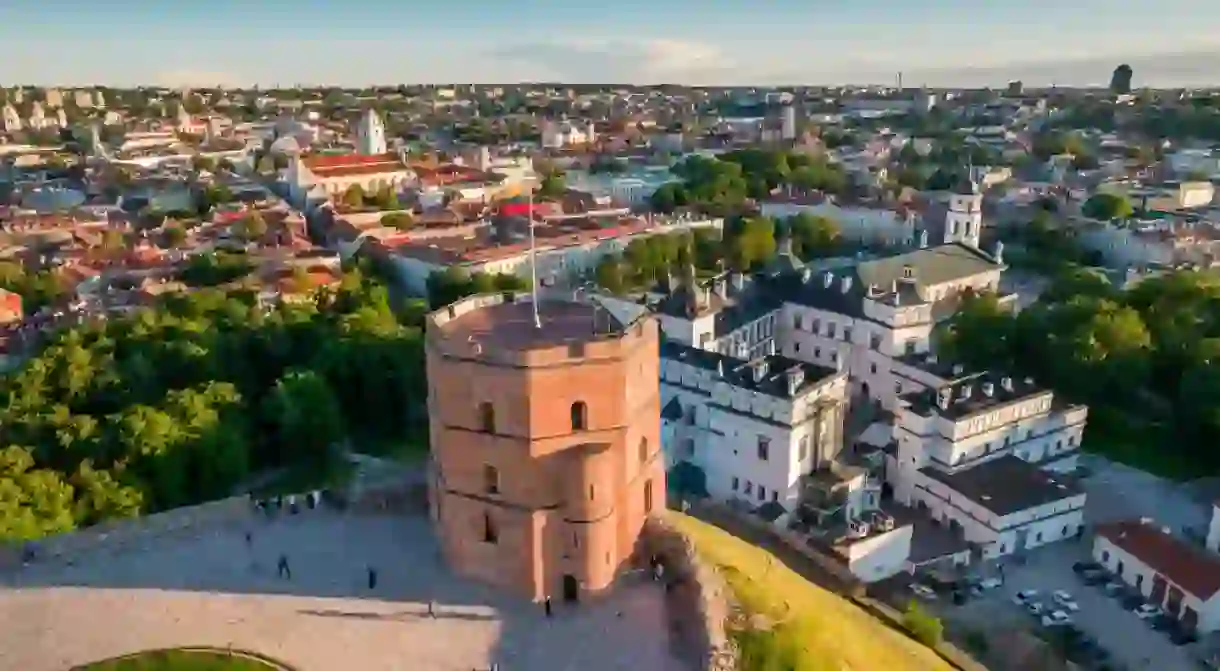20 Must-Visit Attractions in Vilnius, Lithuania

Lithuania’s capital city Vilnius is so much more than its pretty, Unesco-protected Old Town – although as one of Europe’s oldest surviving medieval centres, its cobblestone streets, ancient churches and well-preserved architecture make it a captivating city break. Vilnius isn’t just beautiful to behold – it’s also an economic powerhouse in the Baltics. And Vilnius’s must-visit attractions, from chilling former KGB cells to the bustling Hales food market, reflect how the city’s turbulent history collides with a creative contemporary culture.
>> Feel like you’re missing out on something? Check out the rest of Vilnius on these tours!
Visit the Museum of Occupations and Freedom Fights
Museum

Explore the Lithuanian Diaspora Art Museum
Museum

The Lithuanian Diaspora Art Museum, formerly the Vytautas Kasiulis Art Museum, focuses on the works of Lithuanian artist Vytautas Kasiulis (1918-1995), who fled to Paris after the Soviet occupation. Spread throughout a neoclassical palace dating from the early 20th century, the permanent collection comprises 950 pieces donated to Lithuania in 2010 by Kasiulis’s widow and their son, as well as works by other Lithuanian artists who worked from exile during the Soviet era.
Marvel at the Three Crosses Monument
Museum

Go to the St. Anne’s and Bernardine Church Complex
Church

St Anne’s Church was built in the Flamboyant Gothic and Brick Gothic styles that were prevalent in the Baltics around the time of its construction, between 1495 and 1500. Rumour has it that the church’s soaring, three-spired facade made such an impression on Napoleon that he wanted to deconstruct it and transport it back to Paris with him, following his invasion of Imperial Russia – which included modern-day Lithuania – in 1812. Next to St. Anne’s stands a neo-Gothic bell tower constructed in the 1870s and the much larger Bernardine church, a Gothic structure also dating from the late 1400s and substantially rebuilt during the early-16th and mid-17th centuries.
Pop into Uzupis, one of the smallest republics in the world
Building

Take in the Vilna Gaon Jewish State Museum
Museum

Named after the Vilnius-born Talmudic scholar Vilna Gaon, this museum charts the history of Lithuania’s Jewish population up to and including World War II. It operates several separate exhibitions, but the building at Pamenkalnio Street – also referred to as the Green House – is dedicated to commemorating the devastating effects of the Holocaust on Jewish people in Lithuania. When the Nazis invaded in 1941, the population was around 240,000 – which was reduced to around 10,000 by the end of the war.
Stroll along the Neris River
Architectural Landmark
The best way to see Vilnius on foot is by following the Neris riverbank as it weaves its way through the city centre. Start in the neighborhood of Zverynas and wander through the Old Town, ending up in the northern district of Zirmunai and covering a distance of about 7km (4.3 mi) in total. Key sights along the way include waterfront bars and cafes, street art, randomly dotted sculptures and one of the city’s largest green spaces.
Browse the produce at Hales Market
Market

In Vilnius Old Town, Hales Turgaviete has been a site for buying and selling local produce since 1906, making it one of the city’s oldest and largest food markets. By day, it’s a noisy, aromatic collection of stalls selling fruit and vegetables, meat, cheese, jams and honey. But after dark it takes on a new identity, morphing into one of the hippest night spots in Vilnius with a crop of late-night bars to drink, eat and dance the night away. Some stall owners speak English, but it’s best to brush up on some food-related Lithuanian words before visiting.
Stand on Stebuklas miracle tile
Historical Landmark
Smack bang in the middle of Vilnius’s Cathedral Square, this maroon floor tile marked the end of the longest human chain in history in August 1989 – when two million people joined hands across Estonia, Latvia and Lithuania to protest Soviet rule. Standing out from the paler tiles surrounding it and bearing the Lithuanian word for miracle, the tile is said to possess magical powers. Find out what they are by stepping, jumping or spinning clockwise on it as you make a wish – locals say it’ll come true.
Eat real Lithuanian food at Snekutis
Bar, Pub, Restaurant, Lithuanian

Snekutis started out as an experimental home-brewing venture in Pasvalys in the mid-1990s. It’s now grown to encompass three beery establishments in Vilnius. Head there for big, frothy mugs of homemade ale and classic Lithuanian dishes such as cepelinai (zeppelin-shaped dumplings of raw and cooked potato in a creamy bacon sauce) and kepta duona (fried garlic rye bread served with cheese sauce). Prices are notably lower than those of nearby bars and restaurants – just another reason to eat authentic grub.













